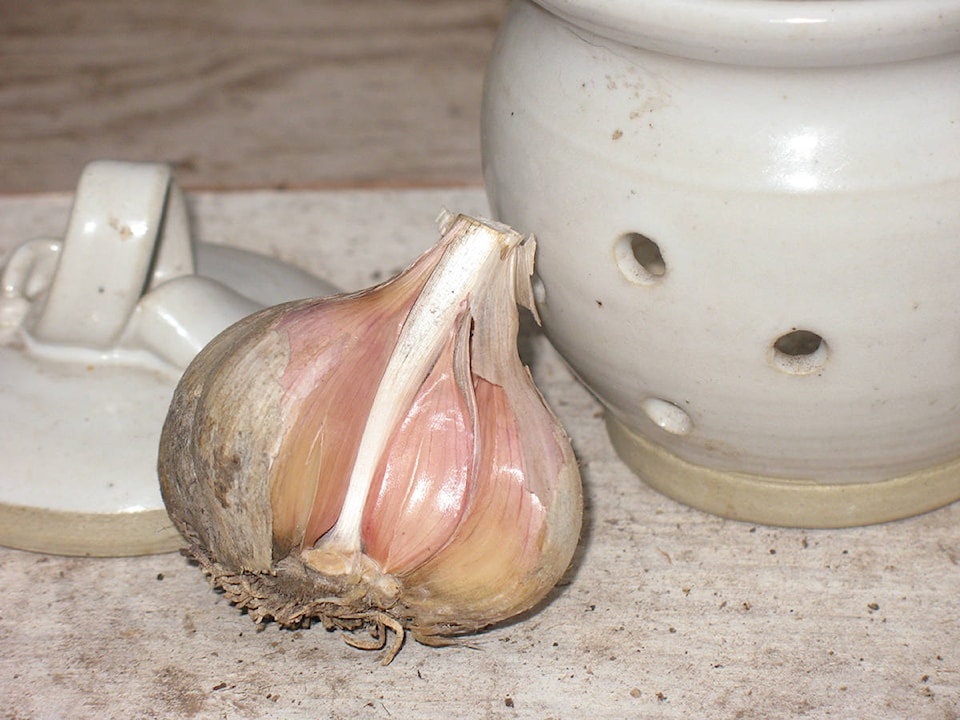By Mary Lowther
Why is there Halloween? It’s there to remind gardeners that the window of opportunity to plant garlic is nigh to keep vampires away. Planting now allows for enough time for roots to develop before freeze-up so the plants will sprout quickly in the spring and produce big bulbs by July. Spring-planted garlic does produce a crop by fall, but they won’t fill out as well as fall-sown.
Here are a few pointers that will produce great garlic every year. Grow the garlic in a different bed every year. Because they stay in the ground for nine months, it’s tricky to rotate them through the garden with the other vegetables that don’t stay in the ground as long, and this is where garden planning really helps. After garlic comes out mid-July, the bed can be sown to cover crop or quick-growing summer crops like lettuce and radishes, followed by cover crop to take it through the winter. In October, plant your garlic in a different bed and so on, returning to the original bed in a few years. I have a fallow year planned in my rotation for each bed as well as a season here or there when the bed is under cover crop. Rotating crops reduces the numbers of possible disease organisms in the soil so the vegetables have a better chance of doing well when they return to each bed. Cover crops also help clean out diseases.
Plant each clove flat side (roots) down and pointy side (stalk) up so extra energy isn’t used up by the plant turning the roots to grow downward and the stalk upward.
Because winter rain washes out many minerals, nutrients and soil organisms, we must constantly replenish these. My soil is sandy so I also add clay and extra nitrogen in the form of alfalfa seed meal. Solomon’s newest Complete Organic Fertilizer formula gently adds nutrients and minerals to the soil, so I add this too when planting out the garlic at the rate of four litres per hundred square feet, along with a quarter inch of compost. When they put on a growth spurt the following spring I side dress with half this amount. Here’s the recipe for sandy soils, typical of this area:
3 litres seedmeal (I use alfalfa)
¼ litre dolomite lime
¼ litre agricultural lime
¼ litre gypsum
½ litre soft rock phosphate
2 Tbsp ferrous (iron) sulphate
2 Tbsp manganese sulphate
2 tsp zinc sulphate
2 tsp copper sulphate
2 tsp boron fertilizer
1 cup kelpmeal
Mix all until uniformly blended.
Never water the bed because mold can set in. I haven’t watered my garlic since reading Solomon’s book, Growing Vegetables West of the Cascades, 12 years ago. Our climate is perfect for growing garlic and other than planting, fertilizing and weeding, we can sit back and watch Mother Nature do the work for us.
Events: Saturday, Oct. 28, 10 a.m.: Create a natural biodiverse landscape; use native plants on your land. Learn how to select, grow and propagate at Dinter Nursery.
